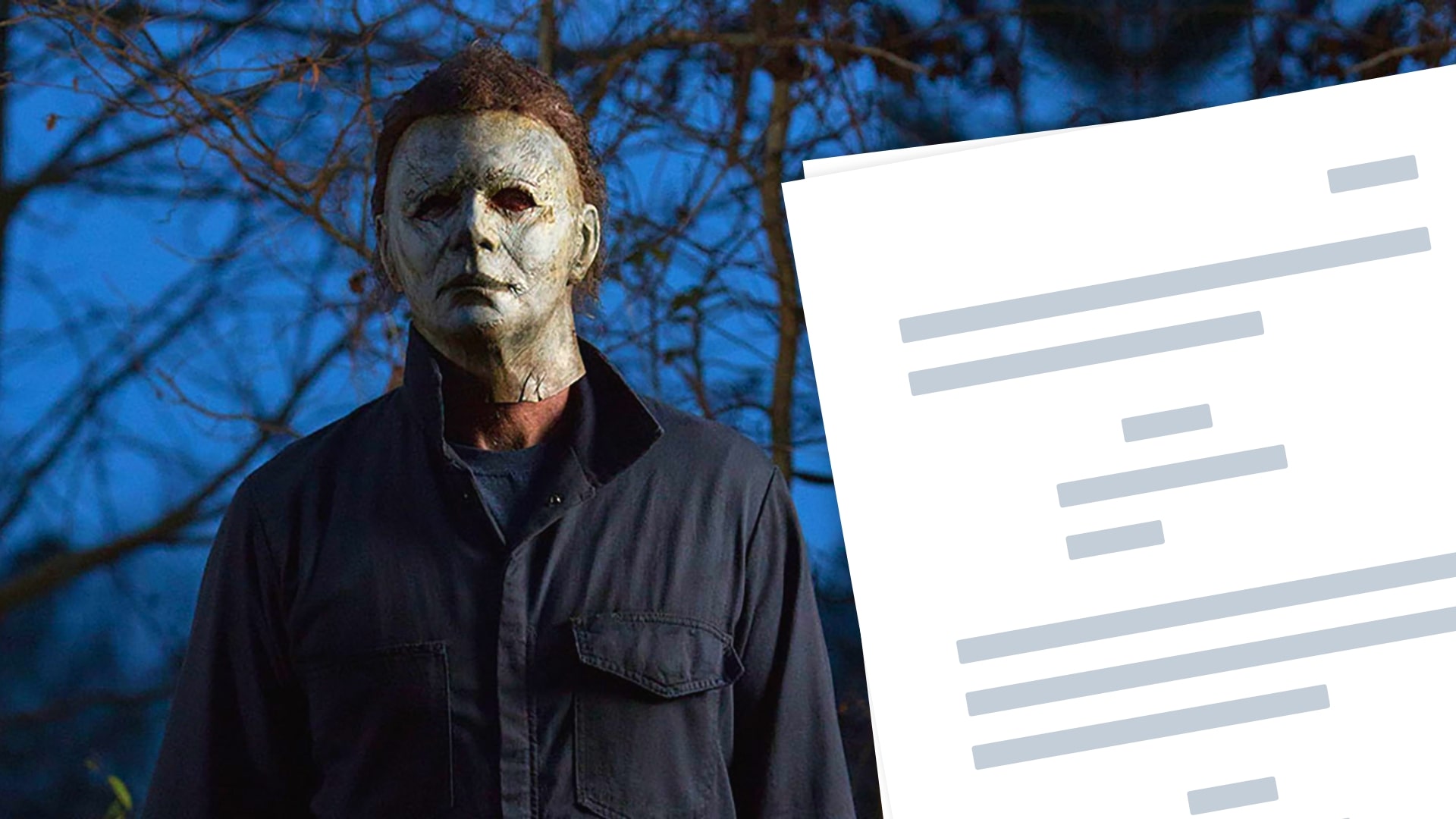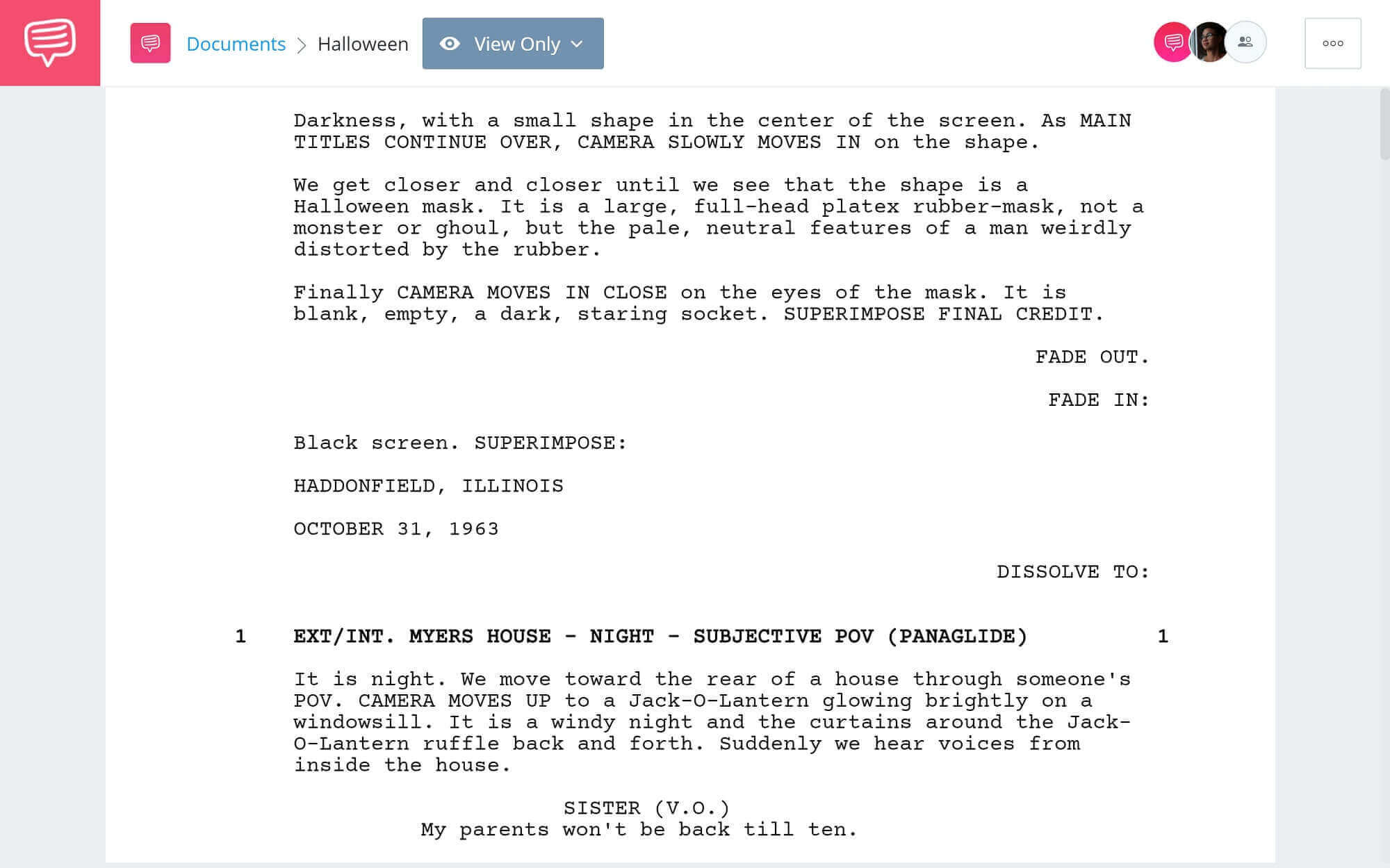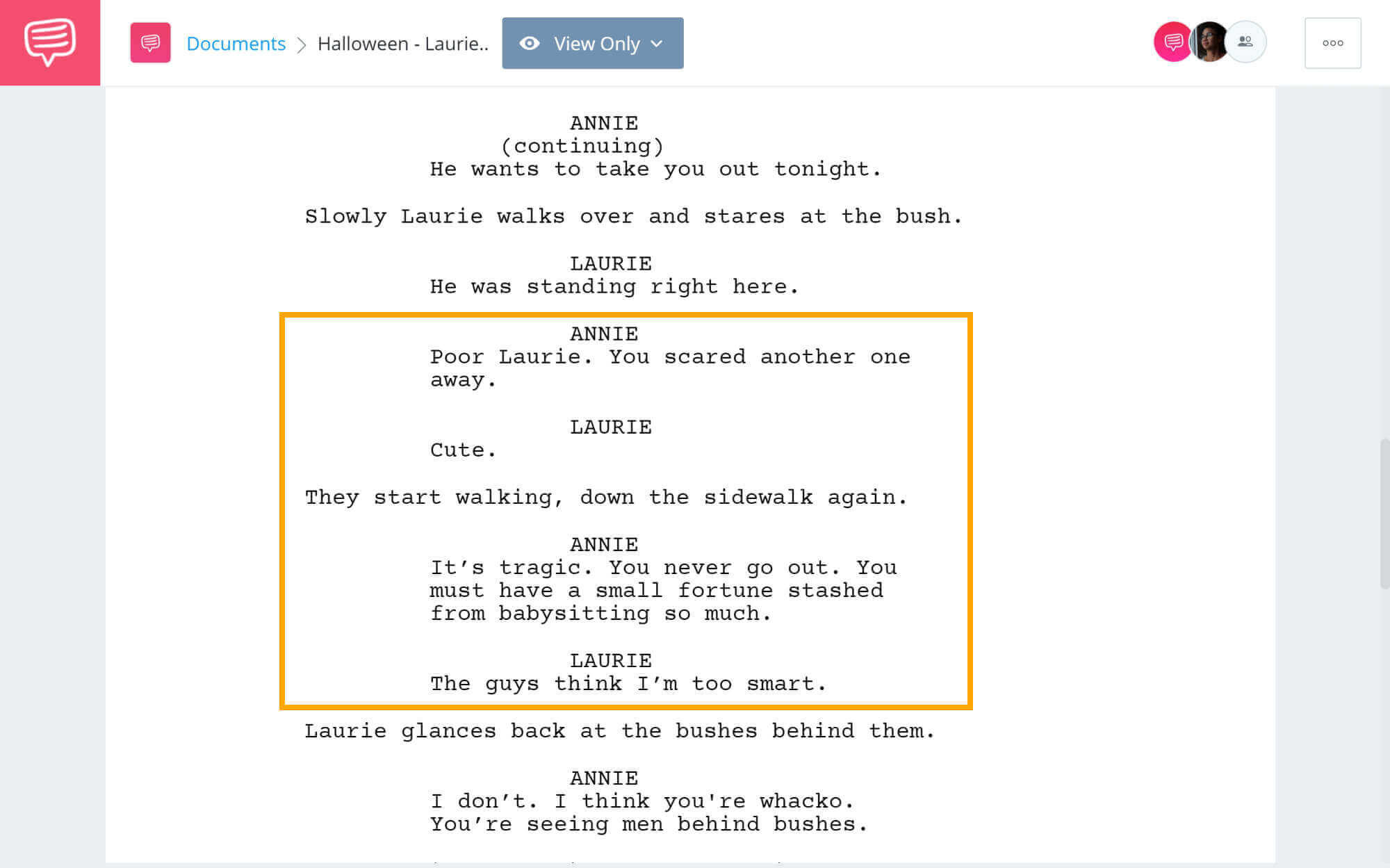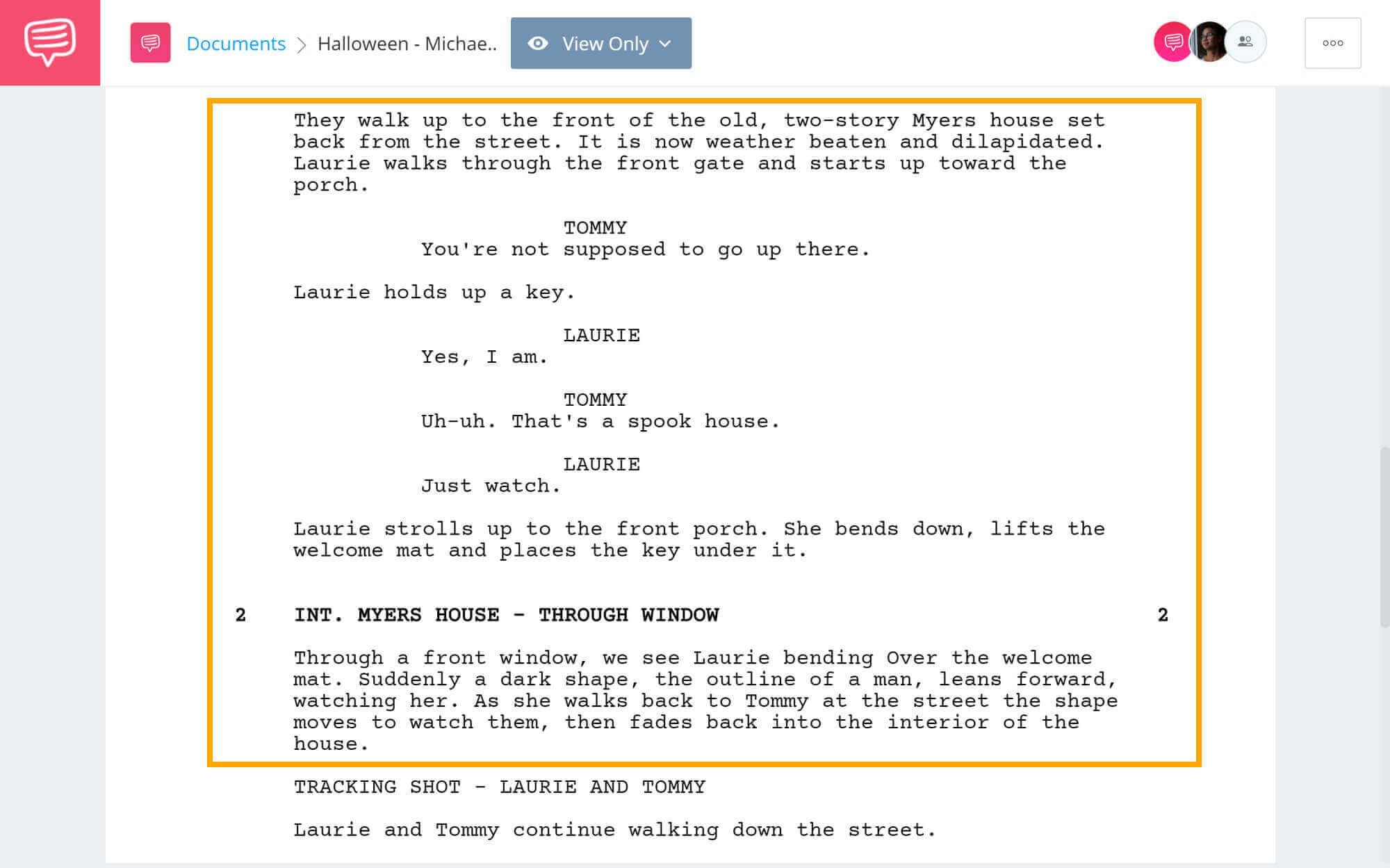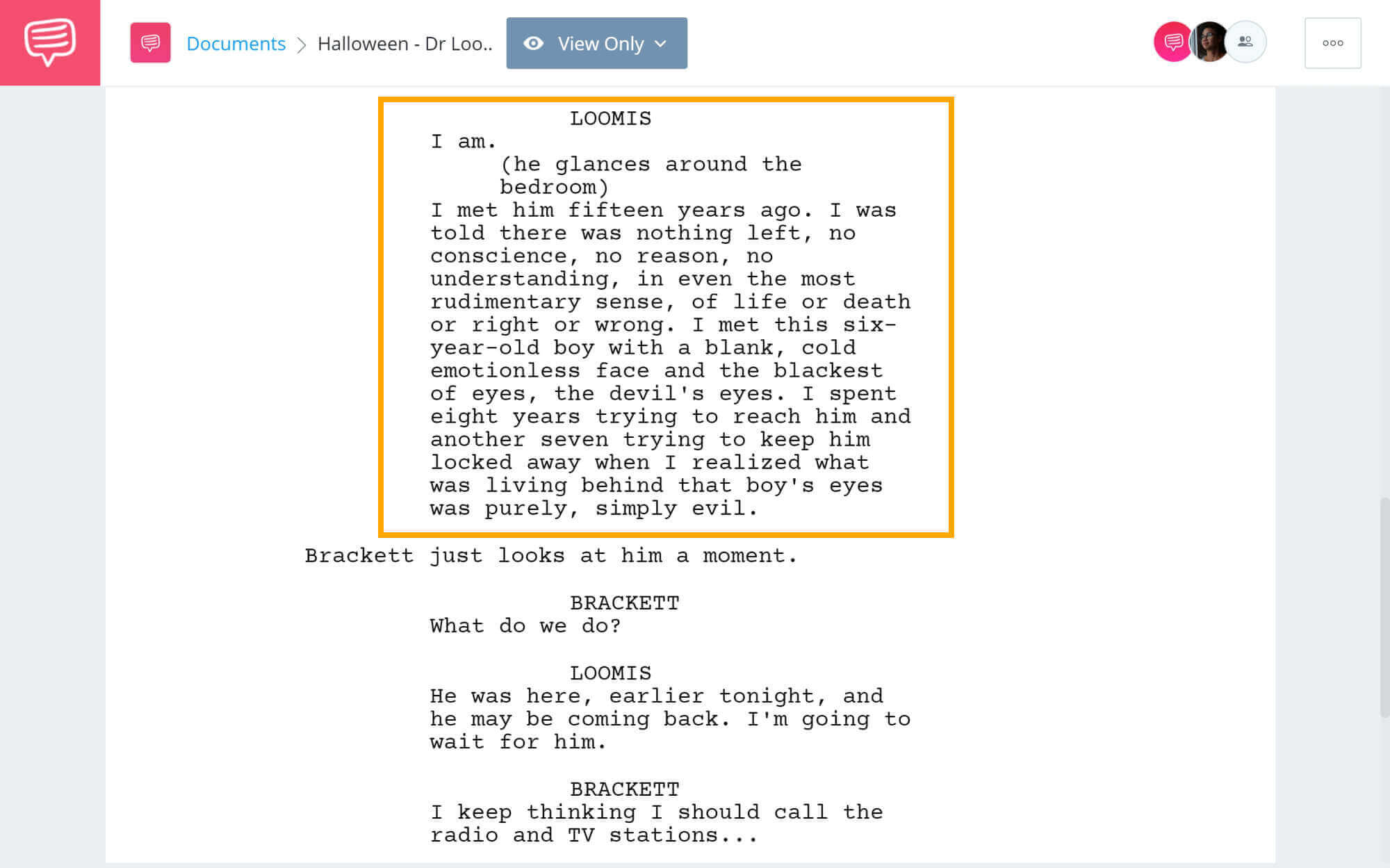In the plethora of slasher-horror films from the ’70s and ’80s, none stand out more than the Halloween (1978) script. Why does this older horror film stand the test time, both critically and with fans? Regardless of the genre, every great movie starts with a great screenplay. In this article we will break down the Halloween script, studying its characters, pacing and “less is more” approach to storytelling. Let’s find out why this boogeyman can’t be killed.
WHO WROTE halloween SCRIPT?
Written by John Carpenter and Debra Hill
John Carpenter is writer/director from New York. He attended the USC film school and won an Academy Award for “Best Live-Action Short Subject.” He is known for the Halloween script, as well his work on Dark Star, Escape from New York, The Fog and The Thing.
Debra Hill was a writer/producer from New Jersey. She is known for her work on the Halloween script, as well as Escape from L.A., The Fog and Escape from New York. She passed away in March 2005 from cancer.
STORY BREAKDOWN
STRUCTURE OF Halloween SCREENPLAY
Here is the story structure for Halloween screenplay:
Exposition
A young Michael Myers watches his sister have sex. After the boyfriend leaves, Michael picks up a Halloween mask and a kitchen knife. He proceeds to mercilessly murder his sister.
Inciting Incident
Dr, Loomis and Marion drive up to the gate of a mental institution; many patients have escaped. Dr. Loomis jumps out of the car to investigate.
A SHAPE appears and attacks Marion. It steals her car and drives off into the night.
Plot Point One
Laurie and Tommy visit the “spook house” where Michael used to live. While Laurie is in class, she notices a Shape watching her. Tommy is told by a neighborhood bully that the “boogey man” is coming to get him on Halloween night. Dr. Loomis searches for Michael, knowing how dangerous he really is.
Plot Point Two
As she goes about her day, Laurie feels as though she is being watched, constantly. Dr. Loomis discovers that the headstone of Judith Myers is missing.
While on her way to her babysitting job, Laurie and Annie learn that a thief broke into a hardware store and stole a mask, rope and a knife.
Rising Action
A Shape watches Laurie and Annie at their respective babysitter jobs. Dr. Loomis and Sheriff Brackett investigate the Myers house. The shape gets his first kill; a dog.
Midpoint
Annie drops off the kid she is babysitting, Lindsey, with Laurie. Annie heads off to meet her boyfriend. When she gets into her car, she notices something is wrong, but it’s too late. The Shape appears in the backseat, grabs Annie and slices her throat.
Plot Point Three
Tommy sees the “boogeyman” across the street. Meanwhile, Loomis scares a bunch of kids away to protect them. Sheriff Brackett realizes that his town is going to become a slaughterhouse.
Build Up
The Shape watches as Bob and Lynda have sex. Post-coitus, Bob heads off to the kitchen, where he is brutally murdered and pinned to the wall. Wearing a sheet like a ghost, the Shape approaches Lynda. She calls Laurie, who hears her friend die as the Shape strangles her with the phone cord.
Climax
Laurie checks on her friends and finds their bodies. Laurie stabs Michael with a sewing needle, but he isn’t dead. He chases Laurie and the kids. Dr. Loomis arrives and shoots Michael several times; he falls out of a window.
Finale
Dr. Loomis looks out the window to see if Michael is truly dead. He’s gone...
Related Posts
Halloween Tropes
Horror tropes in the Halloween script
The Halloween (1978) script was not the first slasher flick of the '70s. It was however, the film that made slashers famous, most notably the use of the Final Girl and Death by Sex tropes.
FINAL GIRL DEFINITION
What is the Final Girl?
The Final Girl is a common archetype in horror iconography. She is pure and just compared to other characters and is often marked by virginity. This “purity” gives her a chance to survive to the end of the story, provided she becomes strong enough to face the monster.
Famous Final Girls
- Laurie Strode (Halloween)
- Ellen Ripley (Alien)
- Sydnee Prescott (Scream)
- Nancy Thompson (A Nightmare on Elm Street)
- Sally Hardesty (The Texas Chain Saw Massacre)
- Alice Hardy (Friday the 13th)
In the first act of Halloween’s plot, it’s established very early on that Laurie is quite different from her friends. We imported the Halloween script into StudioBinder's screenwriting software so we could examine this scene. Notice how the dialogue sets up Laurie's character.
Laurie Can’t Get a Date • Read Full Scene
This scene serves two purposes. First, we see that something is following Laurie. Second, it shows Laurie’s “purity” in contrast to her friends. While Annie and Lynda have boyfriends, Laurie is a bookworm that has bad luck with the boys. Why is this important?
The unspoken yet sacred law in slasher horror: teenage sex is punishable by death (Death by Sex), but virginity and purity gives you a fighting chance.
In Halloween’s plot, Michael Myers always kills someone who has had or is about to have sex. In the beginning of the story, he kills his sister, who just had sex. Annie was about to see her boyfriend when Michael kills her in her car. Bob and Lynda are killed minutes after sleeping with each other. Laurie, Michael’s favorite target, survives to the end.
Here is a video that further explains Halloween’s tropes.
Halloween Tropes Explained
The Halloween storyline is about more than just a babysitter killer, it’s a not-so-subtle lesson on morality.
Halloween Plot
The Halloween script builds suspense
Though it seems contrary to the slasher genre, oftentimes in storytelling, less is more. The first half of the Halloween storyline is mostly non-violent. Rather than outright killing his chosen victim. Michael takes his time stalking Laurie, getting inside her head. This obsession was evident the moment he first saw her.
Michael Stalks Laurie • Read Full Scene
This moment is relevant as it sets up the pacing for the rest of the movie. Michael is methodical and voyeuristic. Parts of the story take place from his point-of view as he studies his victims. This builds tension, making the audience wait anxiously for the slaughter that’s to come.
Here is a video that talks about why Halloween is a work of art in horror.
The Art of Halloween
As much as horror fans enjoy a good bloodbath, too much desensitizes us and takes away the shock value. Building tension and fear, on the other hand, leaves a lasting impression. This is what makes the Halloween storyline stand the test of time.
Halloween Screenplay Highlights
Great writing in the Halloween script
Part of what elevates the Halloween script above all other slasher films (including all of the Halloween sequels and remakes) is the writing. Debra Hill and John Carpenter, the team who wrote Halloween, split the job equally. She wrote all of the dialogue and development for the teenage girls, while he wrote dialogue for Dr. Loomis and development for Michael Myers.
This in turn made all of the characters strong and unique, allowing each of them to add something important to the Halloween plot. The most famous lines in the movie come from Dr. Loomis, as he describes his time spent with Michael.
Dr, Loomis About Michael • Read Full Scene
Since Michael Myers is a character that doesn’t speak, Carpenter had to use Dr. Loomis to flesh out the killer’s character.
The haunting monologue tells us everything we need to know: Michael is a force of evil.
Dr. Loomis’ Speech
Here are some other great Halloween (1978) script quotes:
- Death has arrived in your little town, sheriff.
- Well, it's Halloween. I guess everybody's entitled to a good scare.
- It was the boogeyman…
- Terrific. I've got three choices. Watch the kid sleep, listen to Lynda screw or talk to you.
- He came home...
Related Posts
UP NEXT
Read and download more scripts
Halloween not only jump-started the slasher genre, but it’s also a cut above the rest in terms of story. If you want to continue reading screenplays, we have similar titles like Alien, Midsommar, and Jurassic Park in our screenplay database. Browse and download PDFs for all of our scripts as you read, write and practice your craft to become the next great screenwriter.
